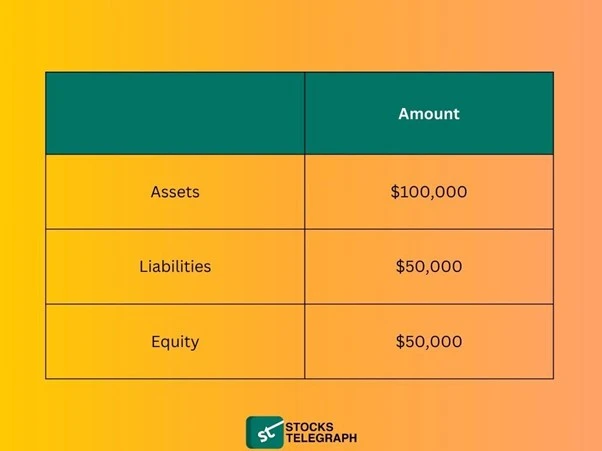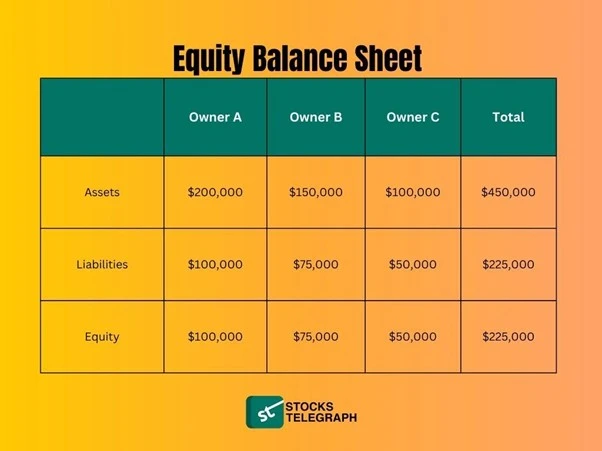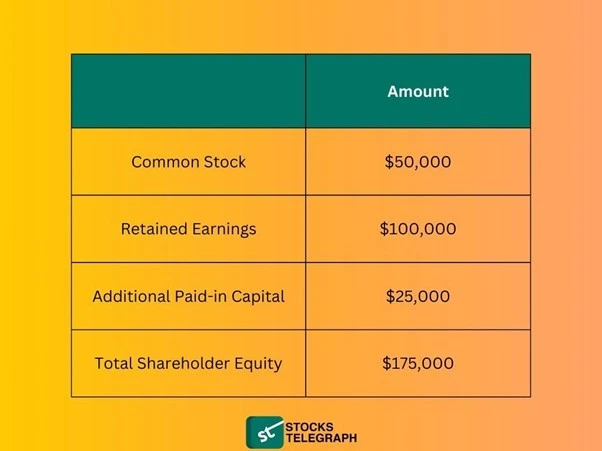Unlocking the value of business equity can be the key to taking your company to the next level. However, with so many options available, it can be difficult to know where to start. That’s why our comprehensive guide is here to help.
From equity financing to mergers and acquisitions, we’ll explore the different strategies you can use to unlock the full potential of your business equity.
Expert insight and practical advice will help you determine your company’s value, attract investors, and negotiate deals that are beneficial to all parties.
No matter where you are in your business journey, this guide is an invaluable resource for anyone looking to grow their business.
What Is Equity?
Equity is a fundamental concept in business and finance that represents the ownership interest in a company. In other words, business equity represents the residual value of a company’s assets after all liabilities have been paid off.
It can be thought of as the amount of a company’s assets that belong to the owners, shareholders, or investors.
Equity can be raised in various ways, such as through the sale of shares of stock, retained earnings, or by issuing convertible securities. A shareholder’s investment results in ownership of the company and potential returns, including dividends and capital gains.
It is a crucial component of a company’s capital structure and can be used to finance growth and expansion, as well as to attract new investors.
With equity financing, companies can fund projects they would not have been able to invest in with debt financing since no interest is charged. However, equity financing comes with risks, as shareholders bear the brunt of losses and liabilities associated with the company.
How Shareholder Equity Works
Shareholder equity is an important indicator of a company’s financial health and is a crucial component of its balance sheet. In addition to serving as an instrument for attracting new investors, it represents the value of the company owned by its shareholders.
There are several ways that shareholder equity can increase. A company that generates profits can, for instance, reinvest the profits or distribute them to shareholders as dividends. Furthermore, if a company’s assets increase in value, shareholder equity can rise as well.
However, shareholder equity can also decrease. For example, if a company incurs losses, this can decrease its shareholder equity. Additionally, if a company takes on debt or issues new shares of stock, this can dilute the value of existing shares and decrease shareholder equity.
Formula and How to Calculate Shareholders’ Equity
The formula for calculating shareholders’ equity is relatively simple. It is calculated by subtracting a company’s total liabilities from its total assets. The resulting figure represents the total value of the company that is owned by its shareholders.
Here’s the formula for shareholders’ Equity:

Total assets include all of a company’s assets, such as cash, inventory, property, and equipment. Total liabilities include all of a company’s debts and obligations, such as loans, accounts payable, and taxes owed.
What the Components of Shareholder Equity Are?
-
What is Common Equity?
Common equity is also called Common stock represents the ownership of a company’s shares by its investors. It is the most common form of equity and typically provides investors with voting rights and the potential to receive dividends.
-
Retained Earnings
Retained earnings are the profits that a company has earned and kept, rather than distributing to its shareholders as dividends.
These earnings can be used to reinvest in the company’s growth and expansion, which can increase the value of the company and, in turn, the value of its shareholders’ equity.
-
Additional Paid-in Capital
Additional paid-in capital is the amount of money that investors have paid for shares of stock that is in excess of the par value of the shares. This component of shareholder equity can be the result of a company issuing new shares of stock or through the sale of preferred stock.
Owners and Business Equity
Owners are the individuals or entities who have a claim to the equity in a business. This can include individual investors, venture capitalists, private equity firms, and even the company’s own management team.
Owners have a direct stake in the success or failure of the business, as their equity represents their ownership interest in the company. They can participate in the decision-making process and potentially receive returns on their investment in the form of dividends or capital gains.
Equity Balance Sheet for a Single Owner
Here is an example of an equity balance sheet for a single owner:

In this example, the owner has assets worth $100,000 and liabilities of $50,000, resulting in equity of $50,000. This represents the residual value of the owner’s assets after all liabilities have been paid off.
The equity balance sheet is an important financial document that helps to track the value of a business over time. It provides an overview of the company’s financial health and can be used to assess its potential for growth and profitability.
Equity Balance Sheet for Multiple Owners
Here is an example of an equity balance sheet for a business with multiple owners:

In this example, the business has three owners, and their individual equity values are combined to create the total equity value for the business. The equity value represents the residual value of the business’s assets after all liabilities have been paid off.
Example of Shareholder Equity
Here is an example of shareholder equity for a fictional company:

In this example, the shareholder equity of the company is $175,000. This is made up of $50,000 in common stock, $100,000 in retained earnings, and $25,000 in additional paid-in capital. This provides an overview of the value of the company that belongs to its shareholders.
Other Forms of Equity
In addition to shareholder equity, there are other forms of equity that can exist within a business or financial context.
One such form is owner’s equity, which is the equity value that belongs to the owner or owners of a business. This equity can be in the form of investments made by the owner, as well as any profits earned by the business that are not distributed to shareholders as dividends.
Another form of equity is real estate equity, which represents the value of a property that is owned outright by an individual or entity. This equity can increase over time as the property appreciates in value or through the accumulation of equity through mortgage payments.
In the context of personal finance, home equity can also refer to the value of a homeowner’s property that exceeds any outstanding mortgage or other debts secured by the property. This equity can be used as collateral for loans or lines of credit.
Private Equity
Private equity refers to investments made in private companies that are not publicly traded on stock exchanges. Private equity firms typically invest large amounts of money in companies that they believe have strong growth potential, with the aim of eventually selling their stake in the company for a profit.
Private equity firms raise funds from institutional investors such as pension funds, insurance companies, and high-net-worth individuals, and then use that money to invest in private companies.
The investments are typically made through a combination of debt and equity financing, and the private equity firm often takes an active role in managing the company.
Private equity investments can be high-risk, high-reward opportunities. The companies that receive private equity investments may be in the early stages of development or undergoing significant changes, which can make their future prospects uncertain.
However, if the investment is successful, the private equity firm can earn a significant return on its investment.
Private equity is a significant force in the financial industry, with billions of dollars invested in companies around the world. It can provide funding and support for companies that might otherwise struggle to secure financing and can help drive innovation and growth in industries across the economy.
Types of Private Equity Financing
Private equity financing refers to investments made by private equity firms into private companies, typically with the goal of providing capital to fuel growth, improve operations, and ultimately generate a return on investment. There are several types of private equity financing, including:
-
Leveraged Buyouts (LBOs)
This is a type of private equity financing where a private equity firm acquires a controlling stake in a company using a significant amount of debt financing. The goal is to use the cash flow generated by the acquired company to pay off the debt over time.
-
Growth Capital
This is a type of private equity financing that provides capital to a company to fund expansion or other strategic initiatives, such as product development, marketing, or acquisitions.
-
Mezzanine Financing
This is a type of financing that sits between debt and equity financing and is typically used to fund the expansion of a company. Mezzanine financing is characterized by higher interest rates and fewer restrictions on the borrower than traditional debt financing.
-
Distressed Debt Investing
This is a type of private equity financing where an investor purchases the debt of a company that is in financial distress, with the goal of taking over the company and turning it around.
-
Venture Capital
This is a type of private equity financing that provides capital to start-up or early-stage companies that have the potential for high growth. Venture capital firms typically invest in companies that are still in the development stage and have yet to generate significant revenue.
-
Angel Investing
This is a type of private equity financing where individual investors provide capital to start-up or early-stage companies in exchange for equity in the company. Angel investors typically invest small amounts of money than venture capital firms and are often more involved in the management of the company.
Home Equity
Home equity refers to the portion of a property’s value that is owned outright by the homeowner, and is not owed to any mortgage or other lender.
Home equity can be used in a number of ways, including as collateral for a loan or line of credit, or as a source of funds for large expenses such as home renovations or college tuition.
One way to access home equity is through a home equity loan, which allows homeowners to borrow a fixed amount of money using their home as collateral. Home equity loans typically have fixed interest rates and monthly payments, and can be a good option for homeowners who need a lump sum of cash for a specific expense.
Another option is a home equity line of credit (HELOC), which allows homeowners to borrow against their home equity on an as-needed basis. HELOCs typically have variable interest rates, and homeowners can draw on the line of credit as needed up to a certain limit.
Brand Equity
Brand equity refers to the value that a brand adds to a company and its products or services. It represents the intangible assets that a brand holds, such as consumer perception, brand awareness, and loyalty.
Strong brand equity can help a company differentiate its products or services from competitors and command a premium price.
One of the key components of brand equity is brand awareness, or the extent to which consumers are familiar with a brand and its products or services. This can be achieved through effective marketing and advertising campaigns that promote the brand and its unique features and benefits.
Another important aspect of brand equity is brand loyalty, or the degree to which customers are committed to a particular brand and choose it over others. This can be fostered through positive customer experiences, consistent messaging and branding, and a strong reputation in the industry.
Equity vs. Return on Equity
Equity and return on equity are two related but distinct financial metrics.
Equity refers to the total value of assets that a company owns outright, minus any liabilities or debts that it owes. This represents the portion of a company’s value that is owned by its shareholders.
Return on equity (ROE), on the other hand, is a measure of how efficiently a company is using its equity to generate profits. It is calculated by dividing a company’s net income by its total equity.
While equity represents the total value of a company’s assets, ROE provides insight into how effectively the company is using those assets to generate profits for its shareholders.
A high ROE indicates that a company is using its equity efficiently and generating strong returns for its shareholders, while a low ROE may suggest that the company is not maximizing the potential of its assets.
Concluding Remarks
In conclusion, unlocking the value of business equity is a complex process that requires careful consideration and planning.
However, by following the comprehensive guide outlined in this article, business owners can gain a better understanding of their options and develop a strategy to maximize the value of their equity.
Whether it’s through selling the business, restructuring ownership, or accessing capital through equity financing, there are a variety of methods available to business owners to unlock the full potential of their equity.
By taking a proactive approach and seeking professional advice when necessary, business owners can successfully unlock the value of their equity and achieve their financial goals.










